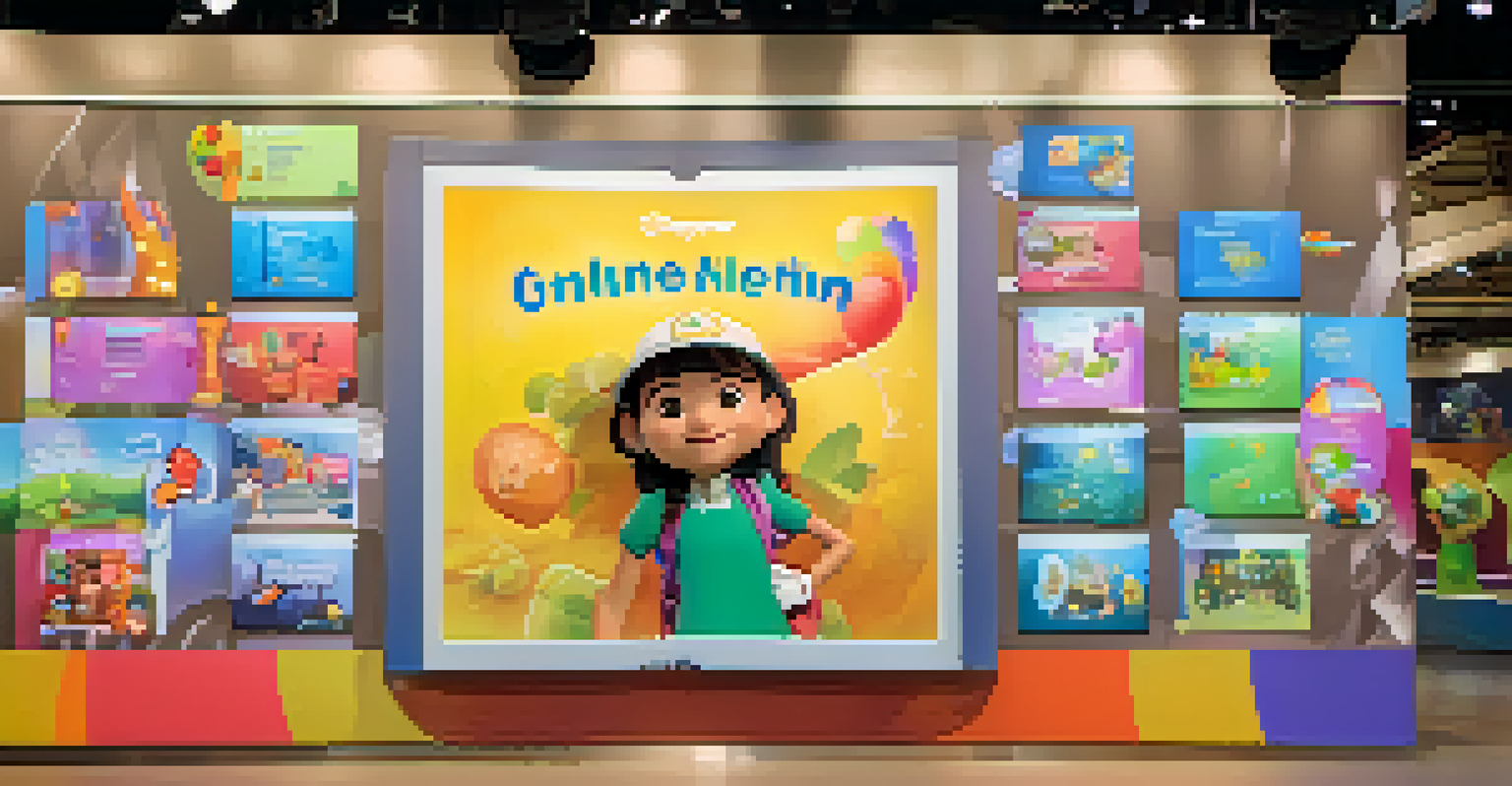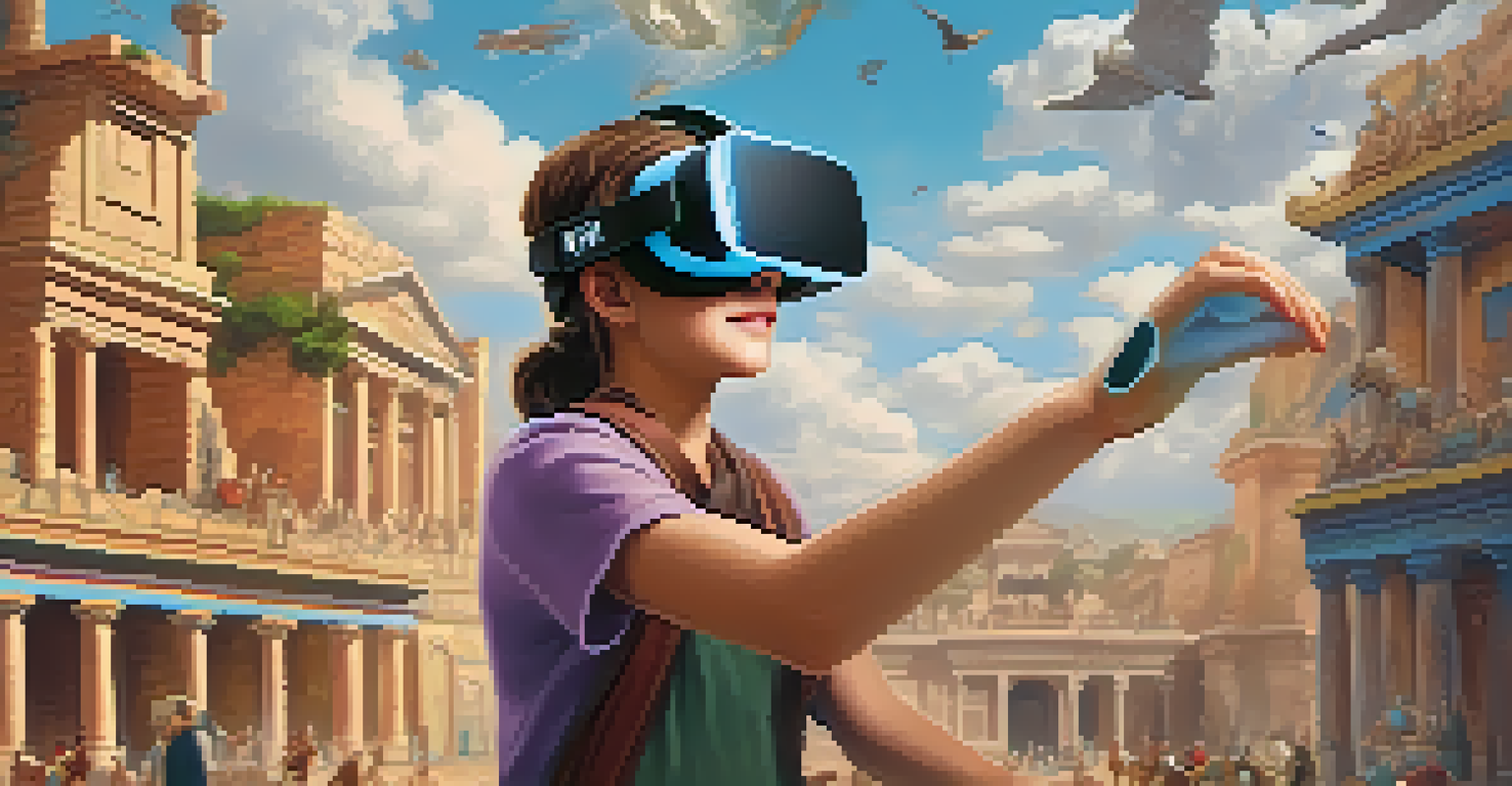Using Animation to Enhance Transmedia Learning Experiences

Understanding Transmedia Learning: A Brief Overview
Transmedia learning refers to the educational experience that unfolds across multiple platforms and formats. Think of it as a story that is told not just through one medium, like a book, but through a combination of videos, games, social media, and more. This approach allows learners to engage with content in diverse ways, catering to different learning styles and preferences.
The more we can use animated content, the more we can help students understand complex concepts.
By presenting information across various channels, transmedia learning creates a richer understanding of the material. For instance, a history lesson might involve reading a textbook, watching a documentary, and participating in an interactive game. Each medium adds layers of context and engagement, offering students a more holistic view of the subject matter.
Animation plays a crucial role in this ecosystem, serving as a bridge between different formats. It captivates attention and simplifies complex ideas, making it an ideal tool for enhancing the transmedia learning experience. The visual nature of animation allows for creative storytelling that can resonate with learners of all ages.
The Power of Animation in Educational Content
Animation has a unique ability to transform abstract concepts into tangible visuals. For example, complex scientific processes can be illustrated through animated sequences, making them easier to grasp. This visual representation can be especially helpful for visual learners who might struggle with traditional text-heavy formats.

Furthermore, animation can evoke emotions and create a connection with the audience. By telling stories that resonate with learners on a personal level, animated content can motivate and inspire. Imagine a short animated film that highlights the importance of environmental conservation—such stories can leave a lasting impact.
Transmedia Learning Enhances Engagement
Transmedia learning utilizes multiple platforms to cater to diverse learning styles, creating a richer educational experience.
Incorporating animation into educational content not only engages learners but also enhances retention. Studies have shown that information presented visually is often remembered better than text alone, making animation a valuable asset in transmedia learning. By combining animation with other media, educators can create a more memorable learning experience.
Creating an Engaging Learning Narrative with Animation
A compelling narrative is at the heart of effective transmedia learning experiences. Animation allows educators to craft stories that guide learners through a specific journey, making the content more engaging. For instance, an animated character could serve as a guide, helping students navigate various learning platforms and activities.
Animation is not the art of drawings that move but the art of movements that are drawn.
By weaving animation into the learning narrative, educators can create a sense of continuity and coherence across different media. This approach helps learners understand how various elements connect, enhancing their overall comprehension. Think of it as a thread that ties together different chapters of a book, ensuring that the story flows smoothly.
Moreover, animated narratives can introduce challenges or problems for learners to solve, fostering critical thinking and problem-solving skills. When students are actively involved in the story, they are more likely to engage deeply with the content, making the learning process both enjoyable and effective.
Leveraging Different Animation Styles for Impact
Different animation styles can evoke different emotions and responses from learners. For example, a whimsical, cartoonish style might be ideal for younger audiences, while a more realistic approach may resonate better with adult learners. By selecting the right style, educators can tailor their content to suit the target audience's preferences and expectations.
Additionally, varying animation techniques—such as 2D, 3D, or stop-motion—can enhance the learning experience. Each technique brings its own flair and can be used strategically to emphasize key points or themes. For instance, 3D animations might be used to illustrate spatial relationships in a science lesson, while 2D animations could simplify historical timelines.
Animation Simplifies Complex Ideas
Animation effectively transforms abstract concepts into visual formats, making them easier to understand and remember.
Ultimately, the choice of animation style should align with the learning objectives and the message being conveyed. By thoughtfully integrating different styles, educators can create a dynamic and engaging transmedia learning environment that captivates learners and enhances understanding.
Integrating Animation with Other Media in Transmedia Learning
Animation shines when integrated with other media formats, creating a multi-dimensional learning experience. For example, a video lesson might incorporate animated infographics to highlight key statistics, making the information more digestible. This integration helps break down barriers between different types of content, allowing for a seamless learning experience.
Moreover, interactive elements such as quizzes or games can be enhanced with animation, turning assessments into engaging activities. Imagine a scenario where students answer questions in a fun animated environment, reinforcing their learning through interaction. This blend of animation and interactivity keeps learners engaged and motivated.
By thoughtfully combining animation with various media formats, educators can cater to diverse learning preferences and create a more inclusive environment. This approach ensures that all students have the opportunity to learn in a way that resonates with them, ultimately leading to more effective outcomes.
Challenges and Considerations in Using Animation
Despite its many benefits, using animation in educational contexts also comes with challenges. One major consideration is the cost and time involved in producing high-quality animated content. Creating animations can be resource-intensive, which may limit accessibility for some educators or institutions.
Additionally, there's the risk of overwhelming learners with too much information or overly complex animations. If not carefully designed, animation can distract from the core message rather than enhance it. Striking the right balance is essential to ensure that animations serve their intended purpose without causing confusion.
Future of Learning with Animation
Emerging technologies like AR and AI promise to personalize animated content, revolutionizing how education is delivered.
Lastly, educators must consider the diverse backgrounds and learning preferences of their students. While animation can be a powerful tool, it may not resonate with everyone. Understanding the audience and being open to feedback can help educators refine their approach and ensure that animation truly enhances the learning experience.
Future Trends: Animation in Transmedia Learning
As technology continues to evolve, so too does the potential for animation in transmedia learning. Innovations such as augmented reality (AR) and virtual reality (VR) are opening new frontiers for immersive educational experiences. Imagine students exploring historical sites through animated VR environments—this kind of engagement could revolutionize how we learn.
Moreover, advancements in artificial intelligence (AI) may allow for personalized animated content tailored to individual learning paths. This could lead to highly customized educational experiences, where learners receive animations that cater specifically to their interests and needs. The future of animation in education looks promising and full of possibilities.

Ultimately, embracing these trends will empower educators to create even more engaging and effective transmedia learning experiences. By staying informed about new technologies and methodologies, educators can harness the full potential of animation to enhance learning outcomes and foster a love for knowledge.